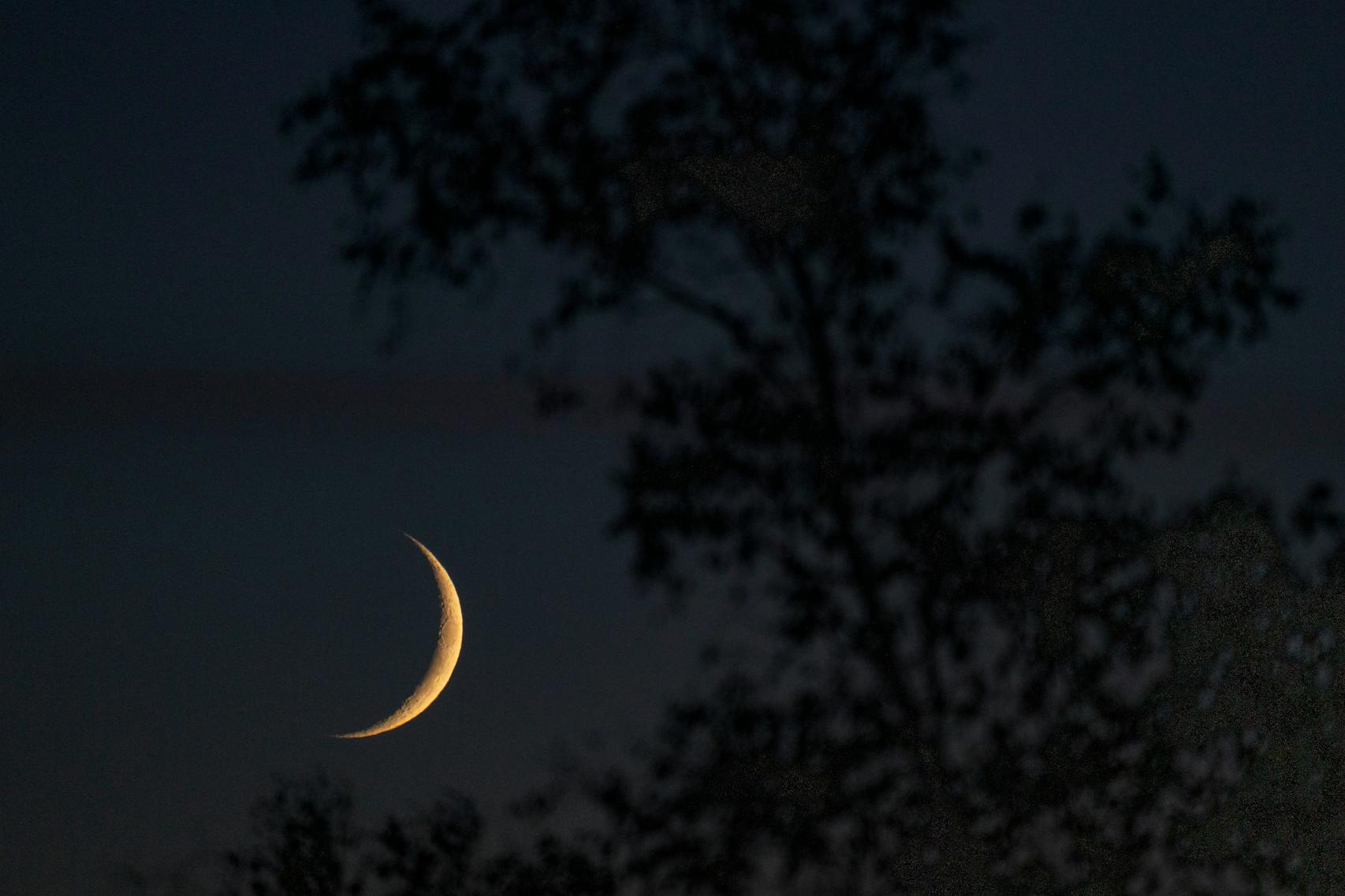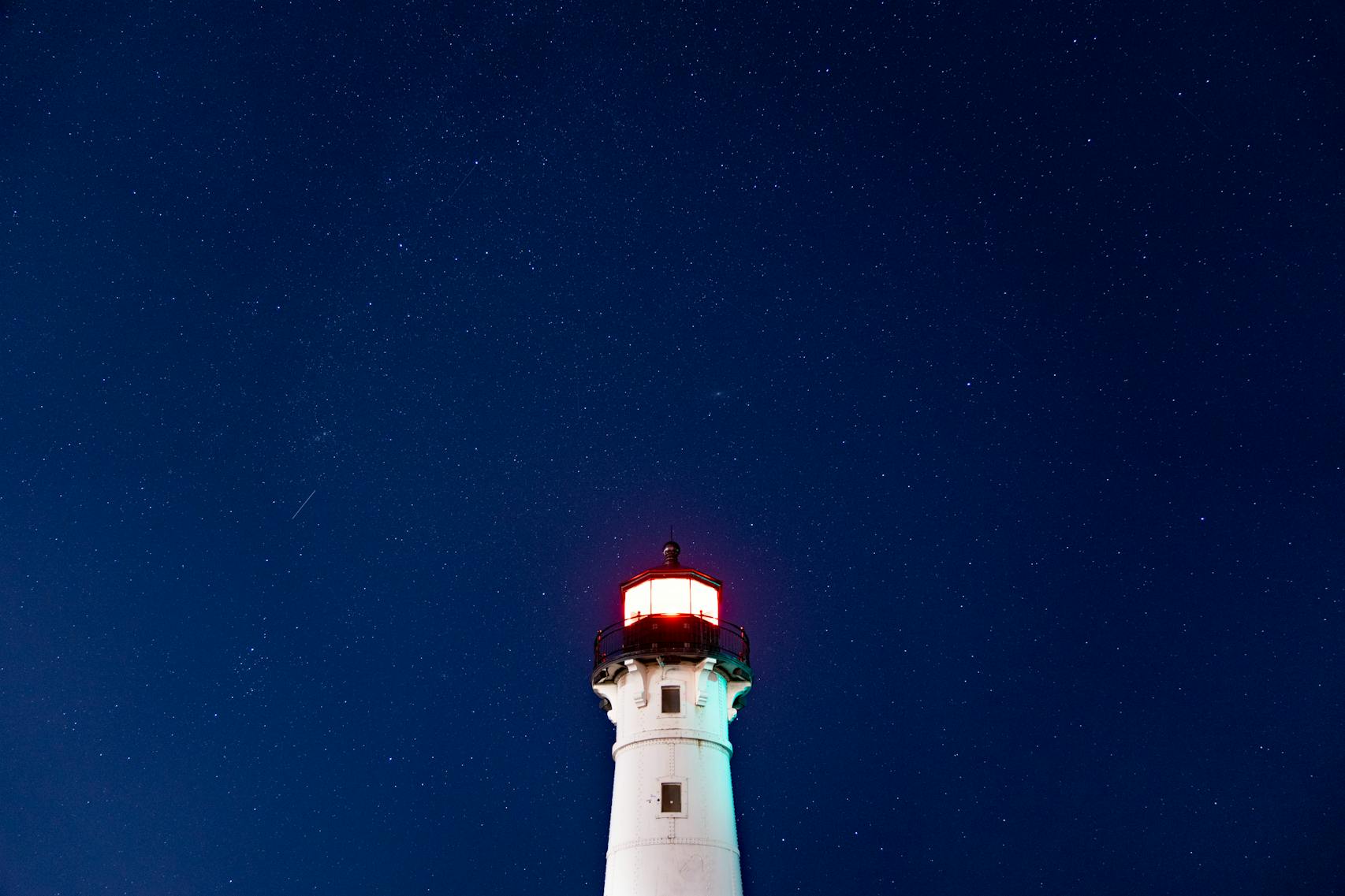Minnesota's large dark sky areas are unique. How can we preserve them?
In the middle of the dark lake, I pull my kayak paddle out of the water to let the surface smooth back to glass. On this clear and moonless night, far away from the glow of city lights, I am floating in stars.
Above me, thousands of them sparkle like diamonds, the Milky Way forming a hazy band. Below me they glisten, too, shimmering like glitter on the water, making lake and sky almost indistinguishable. Gazing into space reminds me that my earthly problems are a tiny speck in this vast universe.
Humans have experienced such moments for millennia. But lately, our views of the cosmos are increasingly obscured.
We now pump so much artificial light into our atmosphere that at least 80% of North Americans can't see the Milky Way where they live, research shows. And we keep adding to the glow; on average, the night sky worldwide brightened 9.6% annually from 2011 to 2022.
Even outside the cities, light pollution affects at least half the country's land mass, meaning rural areas are brighter, too. The issue is bigger than our relationship to nature. Research shows that small amounts of artificial light can harm our ecosystem and, possibly, our health.
But it's not too late — or too difficult — to change it. A small but growing number of Minnesotans are revving up efforts to protect the night sky's purity. The state, they say, is in an enviable position; the Boundary Waters Canoe Area Wilderness, Voyageurs National Park and Canada's Quetico Provincial Park make up the largest Dark Sky Reserve in the world certified by the International Dark-Sky Association.
"We've got really a world class dark-sky opportunity," says Todd Burlet, president of Starry Skies North, the Minnesota chapter of the nonprofit International Dark-Sky Association. "It's such an important and valuable part of the human experience."
Connecting generations
Along the North Shore of Lake Superior, Travis Novitsky has been capturing and sharing glimpses of that experience through his night sky photography for decades. It never gets old, he swears. Peering deep into the universe amazes him.
Novitsky grew up and lives on the Grand Portage Reservation in Minnesota's Arrowhead, where most views of the sky remain dark. He often hauls his Nikon camera and tripod a half-mile into the woods to an especially scenic spot, then finds a rock or patch of ground to soak in the scene.
"Sometimes I'll sit there for 20 to 30 minutes before I take the camera out," he says. "I don't ever lose that sense of wonder."
Novitsky notices both the Greek constellations that he learned growing up, as well as the traditional Ojibwe ones that a local historian showed him more recently. The giant hunter Orion is part of the larger Ojibwe Wintermaker constellation, with outstretched arms, that becomes visible in autumn and reaches its heights during the coldest months. Pegasus is part of an Ojibwe Mooz prominent in the fall, when moose are most active.
He appreciates how the sky transcends generations, connecting us.
"It's interesting to think when I had a relative 300 years ago and they were sitting at a campfire looking up at the stars, they were seeing the same thing."
Novitsky is grateful northern Minnesotans are seeking to preserve the darkness — and so are many of his business-owning neighbors who have begun promoting astrotourism.
Cook County hosts an annual dark sky festival, for instance, and lodges have started offering stargazing specials. The momentum will continue as Northern Lights activity increases into 2025.
Novitsky has mixed feelings, worrying that more visitors will detract from the experience. But he is glad the increase in tourism may motivate more people to stop polluting the sky with excess light. He's had favorite photography spots ruined when someone built a new house or cabin a half-mile away and put up a bright yard light, he says.
More awareness, he hopes, will make people think about how they use artificial light — for themselves and the sake of their neighbors.
"Mindful approaches can definitely make a big difference," he says.
Health and environment
The rhythms of human life have been dictated by darkness and light. Only in the past century and a half have we changed that, using electric light to raise productivity and improve our social connections.
With those positives there's also been a rise in the use of indiscriminate and inappropriate light. Researchers are studying potentially harmful long-term consequences.
Research has shown that artificial light makes some trees hold onto their leaves longer, and disrupts the work of moths and other nocturnal pollinators. Even a small amount of artificial light can confuse freshly hatched sea turtles, for instance, drawing them to move toward buildings on a beach instead of the safety of the water. It throws migratory birds off course. It hampers the mating of fireflies. It gives some species an unnatural advantage, too; spiders build webs near light fixtures to catch insects drawn to glow, for instance.
Studies have also shown indoor artificial light at night disrupts human circadian rhythms by suppressing melatonin production, linking the light to certain types of cancers, obesity, diabetes and other conditions.
Researchers are continuing to delve into whether and how much outdoor lighting contributes to human maladies.
Advocates worry that the increasing use of blue-white LED lights (those with a color temperature of 4000K and higher) could harm our sleep and our health in the long run.
"For as much as we think we know, there's a lot that we don't," says astronomer and dark sky consultant John Barentine. "What that says to me is, wherever possible, we should apply the precautionary principle … proceed very carefully until we have the data."
Brightening orbit
From her rural central Minnesota home, cultural astronomer Jessica Heim is fighting light pollution emanating from the sky itself.
She tracks the proliferation of satellites around the world and warns that our orbit might soon be splattered with sun-reflecting machines.
SpaceX is one of several private companies aiming to launch "mega-constellations" that network with each other to provide coverage around the globe. There is almost no place on earth that a person could go to escape seeing those satellites in the night sky, says Heim, who is studying for her Ph.D. in astronomy.
More than 7,500 functioning satellites orbit Earth now. Global consulting firm Deloitte predicts that by 2030, 40,000 to 50,000 broadband satellites could float in low-Earth orbit. Other predictions show that number reaching upward of 100,000.
That could drastically change the night sky not only for astronomers like Heim, but casual stargazers, too, she says.
"There is no legal limit on how bright something can be," Heim says.
The United Nations set up a committee in 1959 for the peaceful use of outer space, but each country is liable for its private companies, she explains. "There haven't been any functioning legally binding treaties that have gone into effect since the '70s ... It really didn't imagine a future with a lot of private space actors."
SpaceX and others are working with astronomers to mitigate their satellites' luminescence by coating them with special films and orienting them to reflect the sun less, she says, but astronomers aren't yet sure how effective the film coating will be.
Meanwhile, some companies propose launching huge solar panels into space to generate power that they could beam down to Earth.
"Those would be incredibly bright," Heim says.
Noticing and changing
But we can all make a difference on Earth.
Paul Bogard eases his sedan through his brightly lit southeast Minneapolis neighborhood, pointing to missed opportunities for smarter lighting.
The Hamline University associate professor dedicates much of his spare time to keeping our earthly landscape dark — or at least a bit more dim.
After traveling the world to study lighting for his book "The End of Night," Bogard can't stop noticing poor lighting. Take one intersection in south Minneapolis, where small businesses envelop the corners. A car repair shop on the northwest side is particularly bright. A wall pack — an industrial fixture mounted on the side of the building — shoots beams into the roadway and into the eyes of passing drivers.
A fixture with a hood would direct the light down onto the property, he says. Or the business could use motion sensors to light the space only when someone is there. All of it could be dimmed to reduce glare.
"Like so many car places, they just blast the area with light," he says. "It just doesn't need to be that bright."
He continues driving, pointing to city parks with globe lights shining out in all directions, to commercial parking lots with lights on high poles shining bright white light sideways.
In one spot, he wonders aloud whether residents of nearby houses are bothered by light trespassing into their homes.
It raises a question of disparities. Data analysis has shown that neighborhoods with higher proportions of Black, Hispanic and Asian residents see more artificial light at night.
Traveling on Interstate 35W in northeast Minneapolis, Bogard points to parking lot lights that shine into drivers' eyes and billboards that cast light from the bottom up.
He and other dark sky preservationists don't expect cities to go completely dark; they understand that lighting is useful and benefits society. It also makes people feel safer, though in reality, they explain, blasting an area with light often creates only an illusion of safety. After all, criminals need light, too. Glare can be counterproductive, creating contrast that makes it easier for someone to lurk in the darkness.
"We make it so hard for people to see at night … so many lights coming at us from all directions," he says. "Glare blinds us ... It casts shadows. It does everything we don't want light to do."
Besides, advocates say, allowing light to float into the sky is a waste of energy. The International Dark-Sky Association estimates that at least 30% of outdoor lighting in the U.S. is wasted — an estimated $3.3 billion worth annually.
Of all the environmental concerns in modern society, Bogard says, light pollution might be the easiest to fix instantly, and wouldn't require toxic cleanup.
People can start with their own exterior lighting.
"I like working with this issue because it's readily in our control," Bogard says. "We know what the problem is. … It doesn't have to get worse than this."
Light responsibly
The five principles of responsible outdoor lighting, according to the International Dark-Sky Association:
- All light should have a clear purpose. Would reflective markings or other measures work instead?
- Light should be directed only where needed. Use fixtures with shields that point light down to prevent it from trespassing on your neighbor or shining into the sky.
- Light should be no brighter than necessary. Bright lights can produce glare, making it harder to see in darker areas nearby.
- Light should be used only when it's useful. Use timers and motion detectors. Turn lights off in the middle of the night.
- Use warmer color lights where possible. Limit the amount of shorter wavelength blue/violet light, which has a more harmful effect on many living things.



